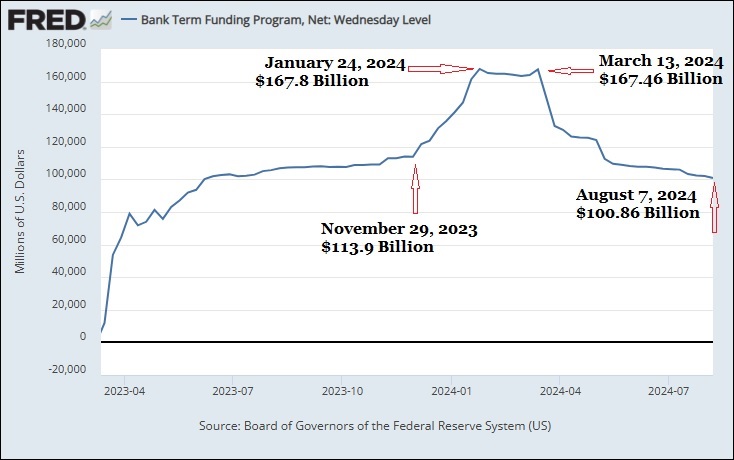
It is now one of the unspoken but immutable dictates on Wall Street: with each new banking crisis, the Federal Reserve will quickly create an emergency bailout program and give it a three to four letter abbreviation so that it vanishes into an alphabet soup blur of Fed bailout programs that preceded it.
The latest iteration came in the spring of 2023 in response to a run on federally-insured banks that federal regulators had allowed to get in bed with crypto and/or had allowed to binge on uninsured deposits. The Fed quickly launched the Bank Term Funding Program (BTFP) on March 12, 2023.
BTFP joined the copious iterations from the Fed’s COVID-19 related bailouts and the Fed’s 2007-2010 bailouts with names like the Primary Dealer Credit Facility (PDCF), Commercial Paper Funding Facility (CPFF), Money Market Mutual Fund Liquidity Facility (MMLF), Term Asset-Backed Securities Loan Facility (TALF) and so on.
The one giant Fed bailout program that didn’t get an alphabet soup nickname was the Fed’s repo loan bailouts that occurred in the last quarter of 2019. By not naming the emergency lending program, perhaps the Fed was hoping its unsavory details would be forgotten. That program provided $19.87 trillion in term-adjusted revolving loans to the same Wall Street megabanks that the Fed had bailed out in the 2007-2010 crisis. (See Internal Charts Show Treasury Agency Assigned to Measure Risk in U.S. Markets Slept through the Repo Crisis of 2019 and the Fed’s $19.87 Trillion Bailout.)
Under the Dodd-Frank financial reform legislation of 2010, the Fed is required to keep the Senate Banking Committee and the House Financial Services Committee informed, on an ongoing basis, about its emergency lending programs. These, however, are bare bones reports. On Monday, for example, the Fed provided those Committees with an updated report on the Bank Term Funding Program. The names of the banks that were borrowing were not provided; neither current nor cumulative loan amounts outstanding for each respective bank was provided, and so forth. What was shared was that as of July 31, 2024, “The total outstanding amount of all advances under the BTFP was $102,065,995,000.”
You are likely asking yourself why an emergency Fed program to stop a bank run in the spring of 2023 still has $102 billion outstanding in the summer of the following year. The answer is that although the Fed stopped making new loans under the BTFP on March 11, 2024, the loans it had previously made were for as long as one-year terms. If, for example, the Fed initiated new loans on Friday, March 8, 2024, the BTFP could still have outstanding balances until March 8, 2025. That would mean that a Fed bailout facility created in March 2023 lasted for two years – defying the statutory language of the Federal Reserve Act which requires emergency lending by the Fed to be short term in nature.
MORE:
Views: 83